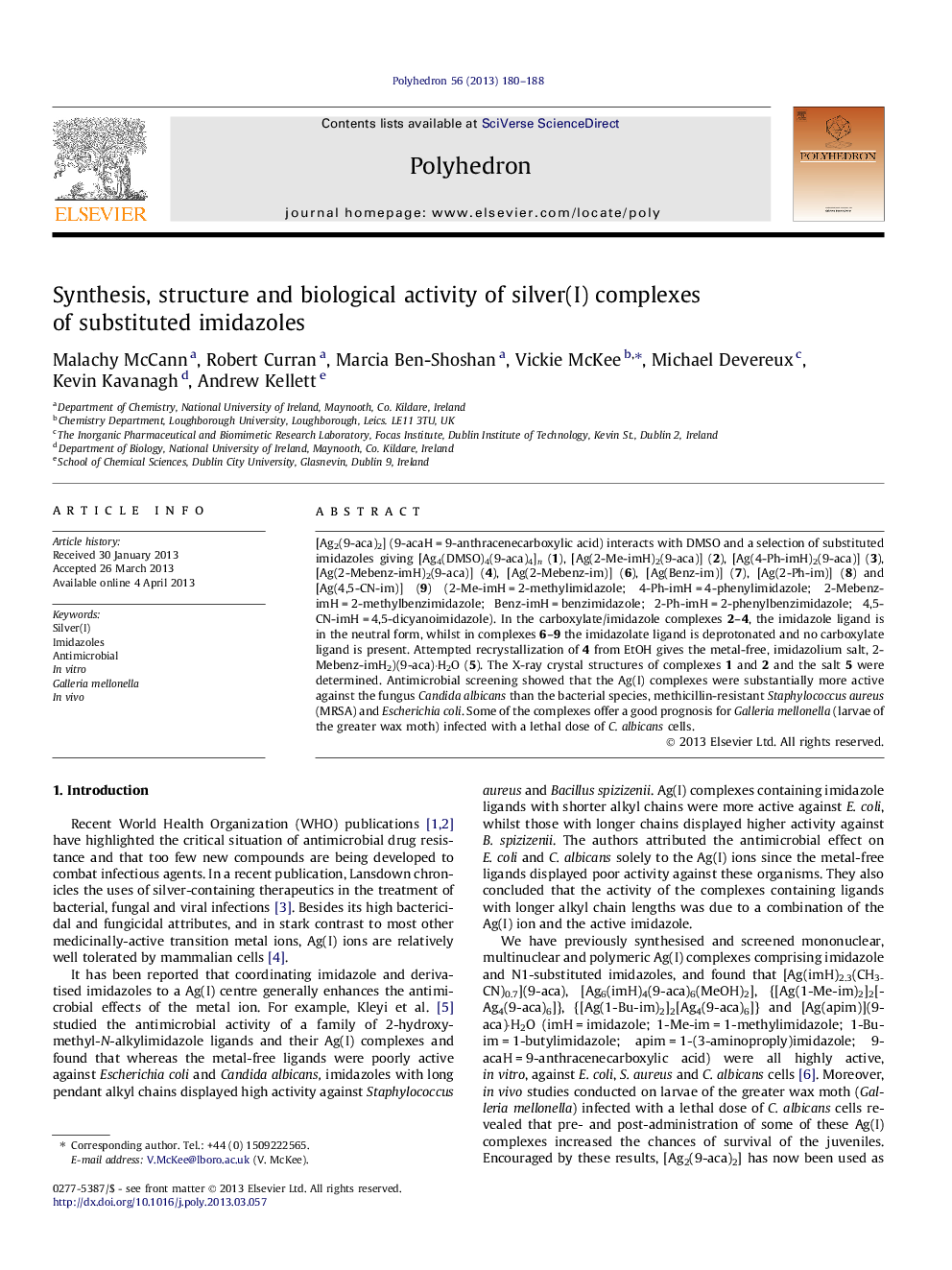| Article ID | Journal | Published Year | Pages | File Type |
|---|---|---|---|---|
| 1336876 | Polyhedron | 2013 | 9 Pages |
[Ag2(9-aca)2] (9-acaH = 9-anthracenecarboxylic acid) interacts with DMSO and a selection of substituted imidazoles giving [Ag4(DMSO)4(9-aca)4]n (1), [Ag(2-Me-imH)2(9-aca)] (2), [Ag(4-Ph-imH)2(9-aca)] (3), [Ag(2-Mebenz-imH)2(9-aca)] (4), [Ag(2-Mebenz-im)] (6), [Ag(Benz-im)] (7), [Ag(2-Ph-im)] (8) and [Ag(4,5-CN-im)] (9) (2-Me-imH = 2-methylimidazole; 4-Ph-imH = 4-phenylimidazole; 2-Mebenz-imH = 2-methylbenzimidazole; Benz-imH = benzimidazole; 2-Ph-imH = 2-phenylbenzimidazole; 4,5-CN-imH = 4,5-dicyanoimidazole). In the carboxylate/imidazole complexes 2–4, the imidazole ligand is in the neutral form, whilst in complexes 6–9 the imidazolate ligand is deprotonated and no carboxylate ligand is present. Attempted recrystallization of 4 from EtOH gives the metal-free, imidazolium salt, 2-Mebenz-imH2)(9-aca)·H2O (5). The X-ray crystal structures of complexes 1 and 2 and the salt 5 were determined. Antimicrobial screening showed that the Ag(I) complexes were substantially more active against the fungus Candida albicans than the bacterial species, methicillin-resistant Staphylococcus aureus (MRSA) and Escherichia coli. Some of the complexes offer a good prognosis for Galleria mellonella (larvae of the greater wax moth) infected with a lethal dose of C. albicans cells.
Graphical abstractSilver(I) complexes of substituted imidazoles have been synthesised and screened for their in vitro and in vivo antimicrobial activity. The complexes offer promise as potential therapeutics.Figure optionsDownload full-size imageDownload as PowerPoint slide
